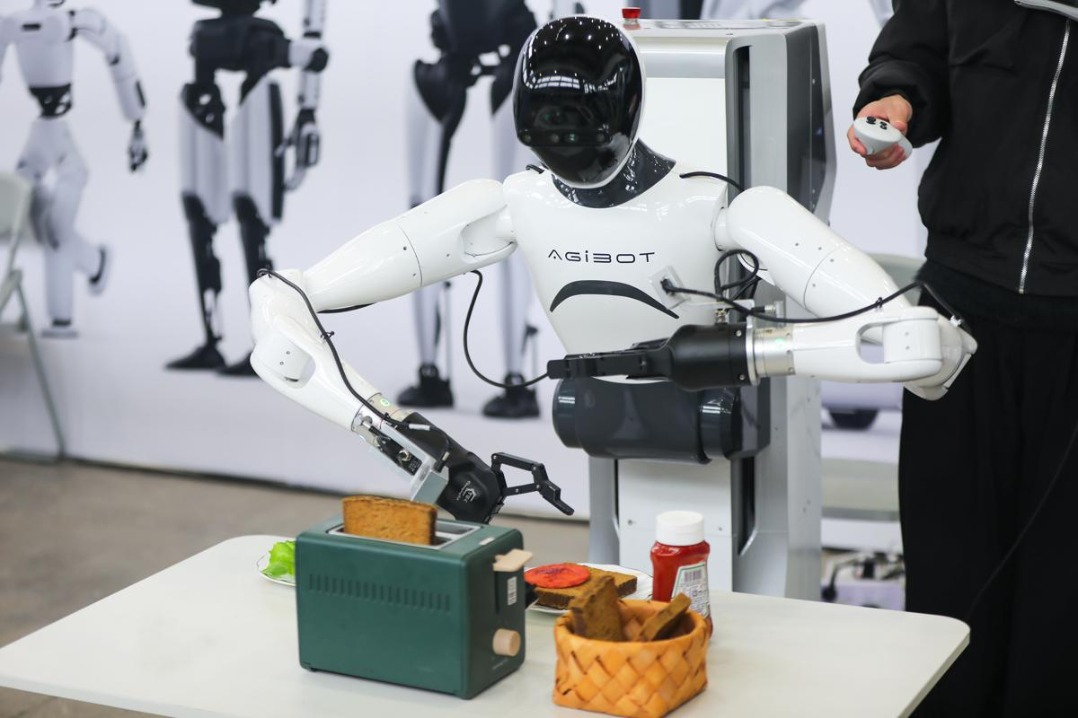Summary:
AgiBot is leading the way in mass-producing humanoid robots in Shanghai.
They have produced over 1,500 robots with plans to increase capacity to 10,000 units annually.
Robots priced under 200,000 yuan ($27,500) will make them more accessible than ever.
37 of the top 100 global humanoid robotics companies are based in China, showcasing emerging technological prowess.
AgiBot's GO-1 AI model accelerates robot training with minimal data, enhancing their functionality.
In a high-tech factory located in Shanghai, engineers are diligently assembling humanoid robots, while rows of newly completed machines are prepped for testing. This factory, situated in the Lin-gang Special Area, is the first in Shanghai dedicated to the mass production of humanoid robots.
Despite being operational for less than a year, AgiBot, the artificial intelligence and robotics startup behind the factory, has already manufactured over 1,500 humanoid robots. Excitingly, they plan to launch a second factory in Shanghai this year with an ambitious goal of producing 10,000 units annually.
"At scale, our robots will cost under 200,000 yuan ($27,500) — less expensive than a family car," states Peng Zhihui, co-founder of AgiBot. This marks a remarkable shift in accessibility for humanoid robots. Initially, the factory aimed for a monthly output of 100 units, but production quickly ramped up to more than 15 units daily due to soaring market demand.
As 2025 approaches, it is expected to be the year of mass humanoid robot production, with Chinese companies like AgiBot leading the charge. According to a recent list by Morgan Stanley, 37 of the 100 global humanoid robotics companies are based in China, including well-known names like UBTech and BYD. The China Electronics Society estimates that the country's humanoid robot market will soar to 870 billion yuan by 2030.
Humanoid robotics is a prime example of embodied AI, which integrates AI with physical hardware, a concept emphasized in China's 2025 Government Work Report. Qiao Hong from the Chinese Academy of Sciences noted, "Humanoid robots are a particularly promising area. China has established a core technological foundation for the large-scale and cost-effective production of high-performance robotic systems."
AgiBot attributes its rapid growth to Shanghai's advanced manufacturing ecosystem and the mature supply chain in the Yangtze River Delta, particularly benefiting from components sourced from the electric vehicle sector. Zhang Shaozheng, AgiBot's manufacturing general manager, explained, "We've leveraged synergies with the new energy sector, particularly in components like electric motors and gearboxes. These mature supply chains enabled us to produce humanoid robots at scale in such a short timeframe."
However, constructing the robot's body is merely the first step; developing its "brain" is equally crucial. Recently, AgiBot launched an AI large language model, the GO-1, aimed at accelerating robot training. This model allows robots to quickly generalize new tasks with minimal training, significantly reducing the technical barriers for embodied AI applications.
The GO-1 model uses real-world human demonstrations and internet-sourced video data to improve the robots' contextual understanding of human activities. At AgiBot's training center, 100 humanoid robots are being taught to perform various tasks such as pouring tea and folding laundry in simulated environments like cafes and living rooms. These robots generate high-quality action datasets daily, essential for training the GO-1 model.
Yao Maoqing, a partner at AgiBot, highlighted the importance of data collection, stating, "Even a simple water-pouring action requires nearly 100 high-quality data samples for training." The collected datasets are uploaded to a cloud computing platform for model iteration, enabling universal task deployment.
Currently, the primary focus for humanoid robots remains on repetitive industrial tasks, with logistics being a prime application area. Yao emphasized, "While automated guided vehicles excel at transporting goods, tasks such as packaging variable-sized items demand real-time adjustments and error correction — a challenge perfectly suited for humanoid robots. AI control allows them to rethink strategies upon failure, much like humans."
As technology continues to evolve, AgiBot envisions a wide range of applications for humanoid robots. "Humanoid robots' flexibility fills the gap between rigid automation and human labor," Yao concluded.








Comments